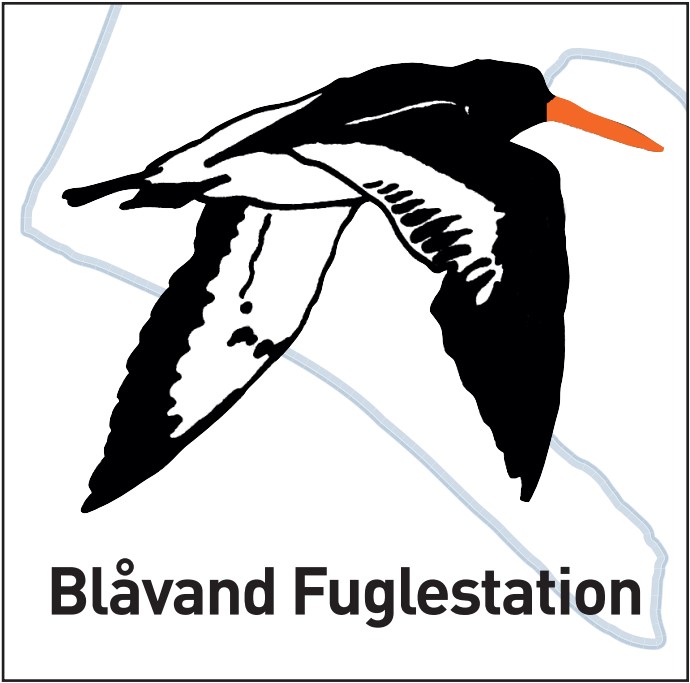Her på Blåvand's blog bringes korte nyheder i dagbogsformat om livet og hændelser på fuglestationen.
Two beautiful Starlings
The ringing:
The morning started a bit foggy but later, it cleared up. But the sun had problems coming through the clouds and the sky stayed grey all morning. I did not have many birds, highlights were two Starlings “Stær”, that were in the net in the second round. Thet are usually in the garden calling from the tree next two the lab, but do not go in the net very often. Maybe the fog helped.
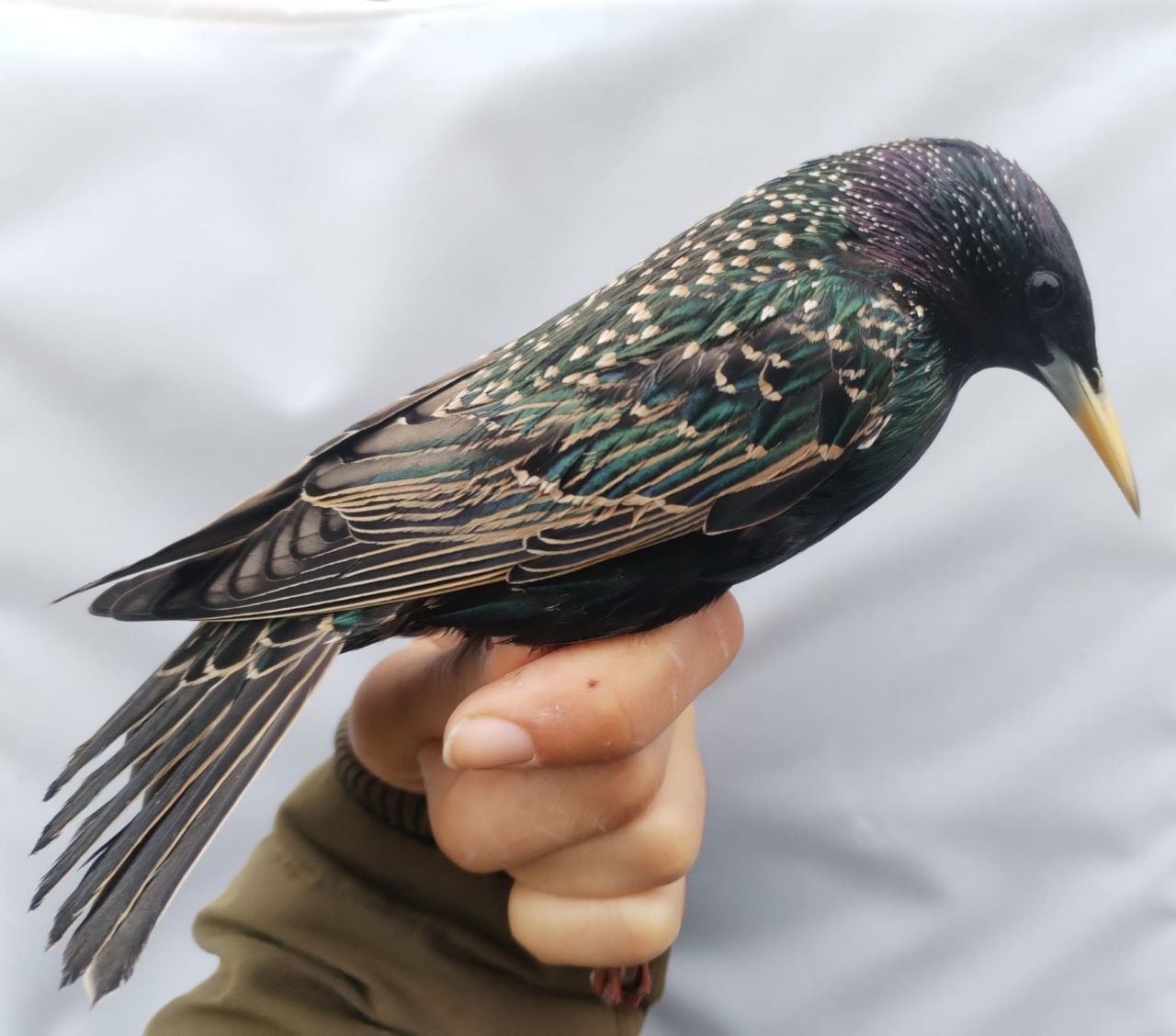 Starling "Stær"
Starling "Stær"
A Siskin “Grønsisken” was also, as always, very cute.
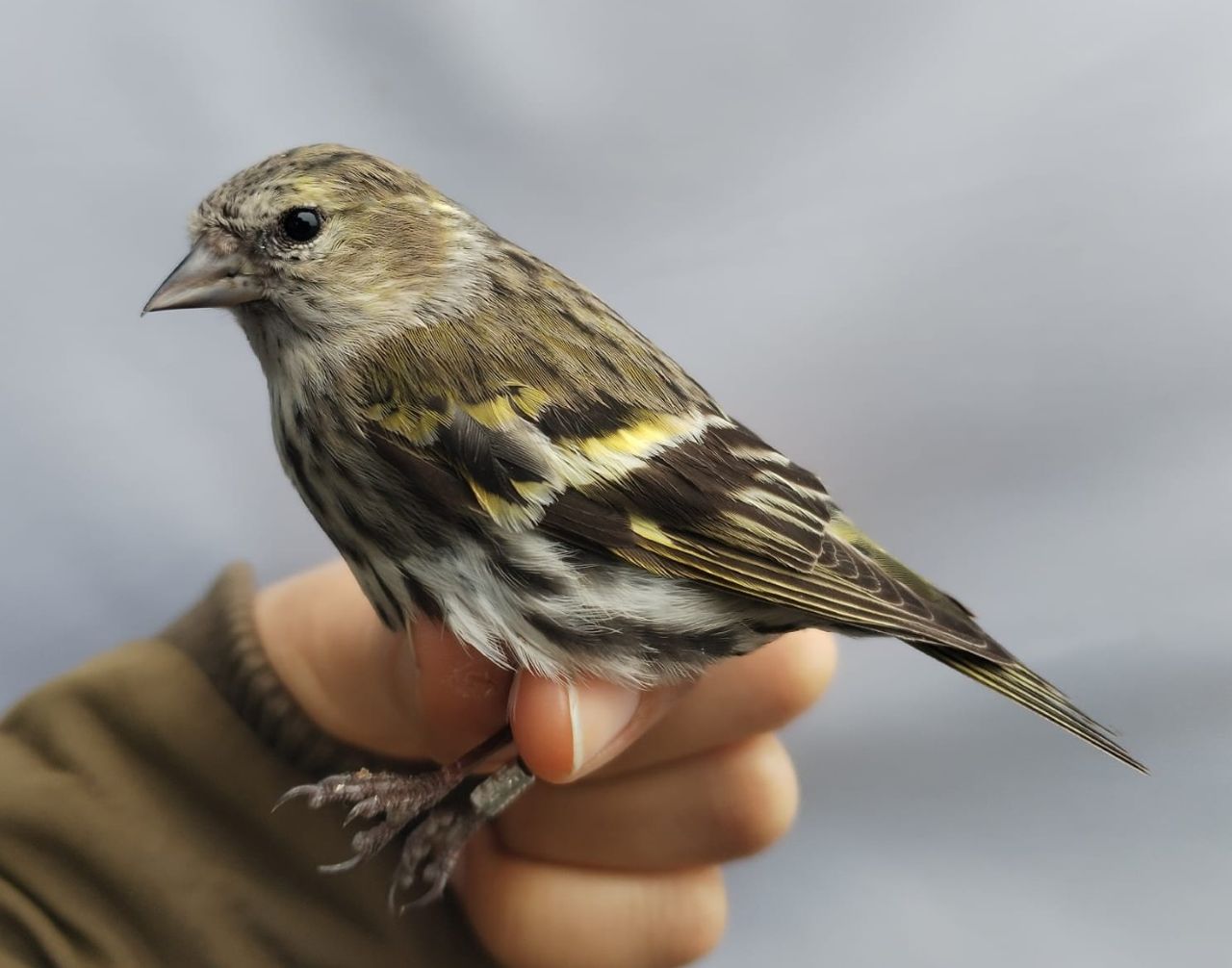 Siskin/ Grønsisken
Siskin/ Grønsisken
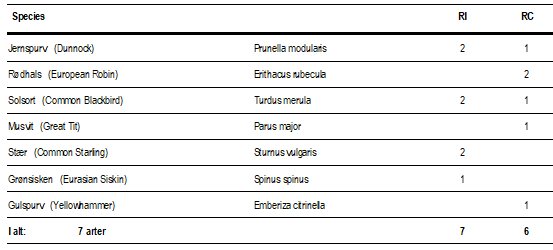
The moths (and a beetle):
Just one moth in the trap this morning, it was again Xylocampa areola “Gedeblad-ugle”. On one of the house walls outside, I found the larval case of Taleporia tubulosa “Cigarsækbærer”. When I went to the trap in lighthouse garden at dusk, I found the Great Diving Beetle, Dytiscus marginalis “Stor vandkalv”.
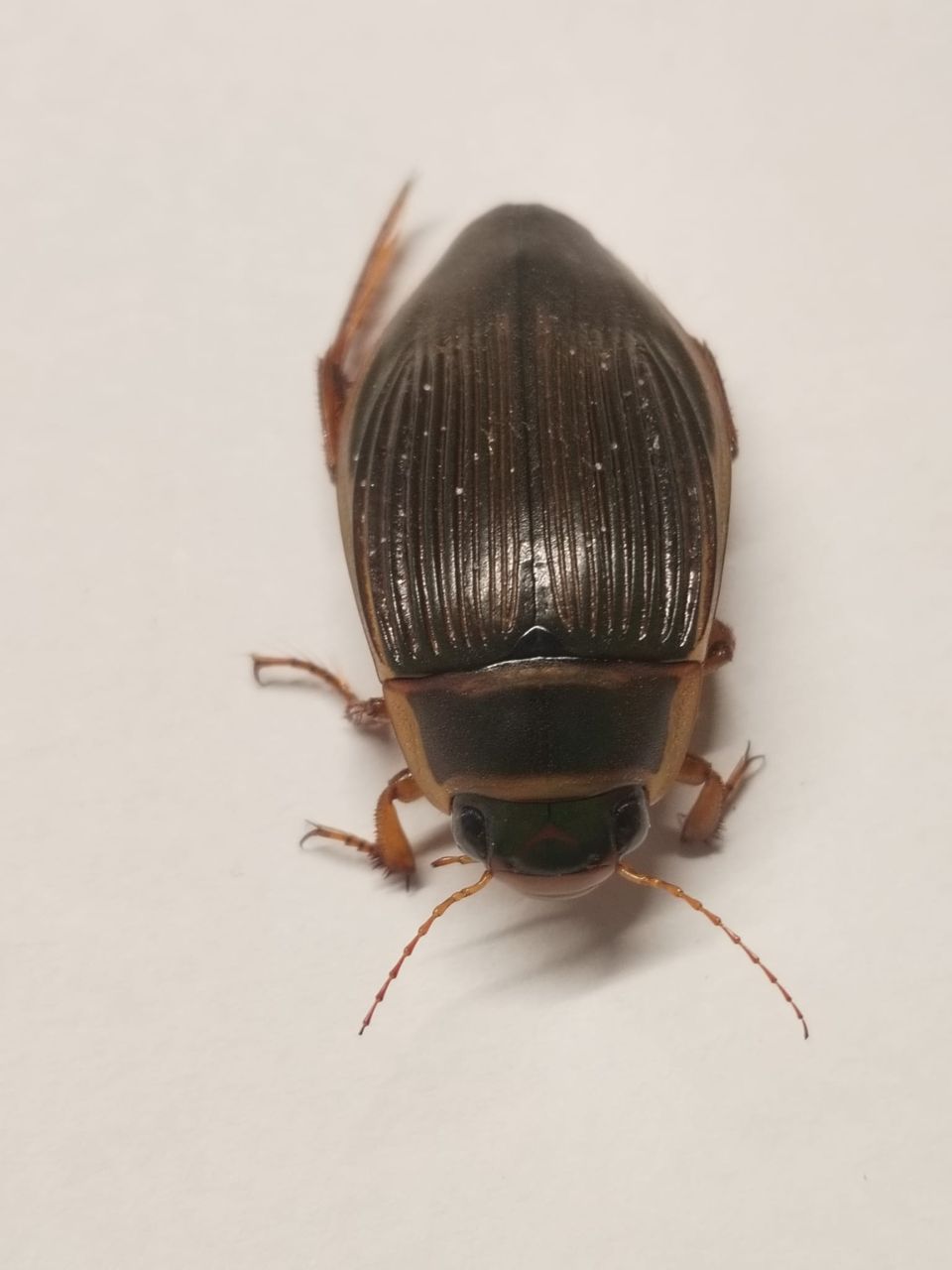 Dytiscus marginalis/ Stor vandkalv
Dytiscus marginalis/ Stor vandkalv
At the station: Hanelie Sidhu
Redpoll - day
The ringing:
Yesterday was already a really nice day for ringing but today was even better. There was again not much wind and soon the sun came out. I had a good number of birds, even better than yesterday, 27 new and 12 recaps. And it was a good variety of species, 15 different. Especially nice was a Bullfinch “Dompap”, a Crested Tit “Topmejse” and two Tree Sparrows “Skovspurv” – I love Sparrows in hand, so although it is a common species that I see every day, I really enjoy them in hand.
But the Redpolls “Gråsisken” made the numbers. First I had one of the subspecies cabaret in the lighthouse garden.
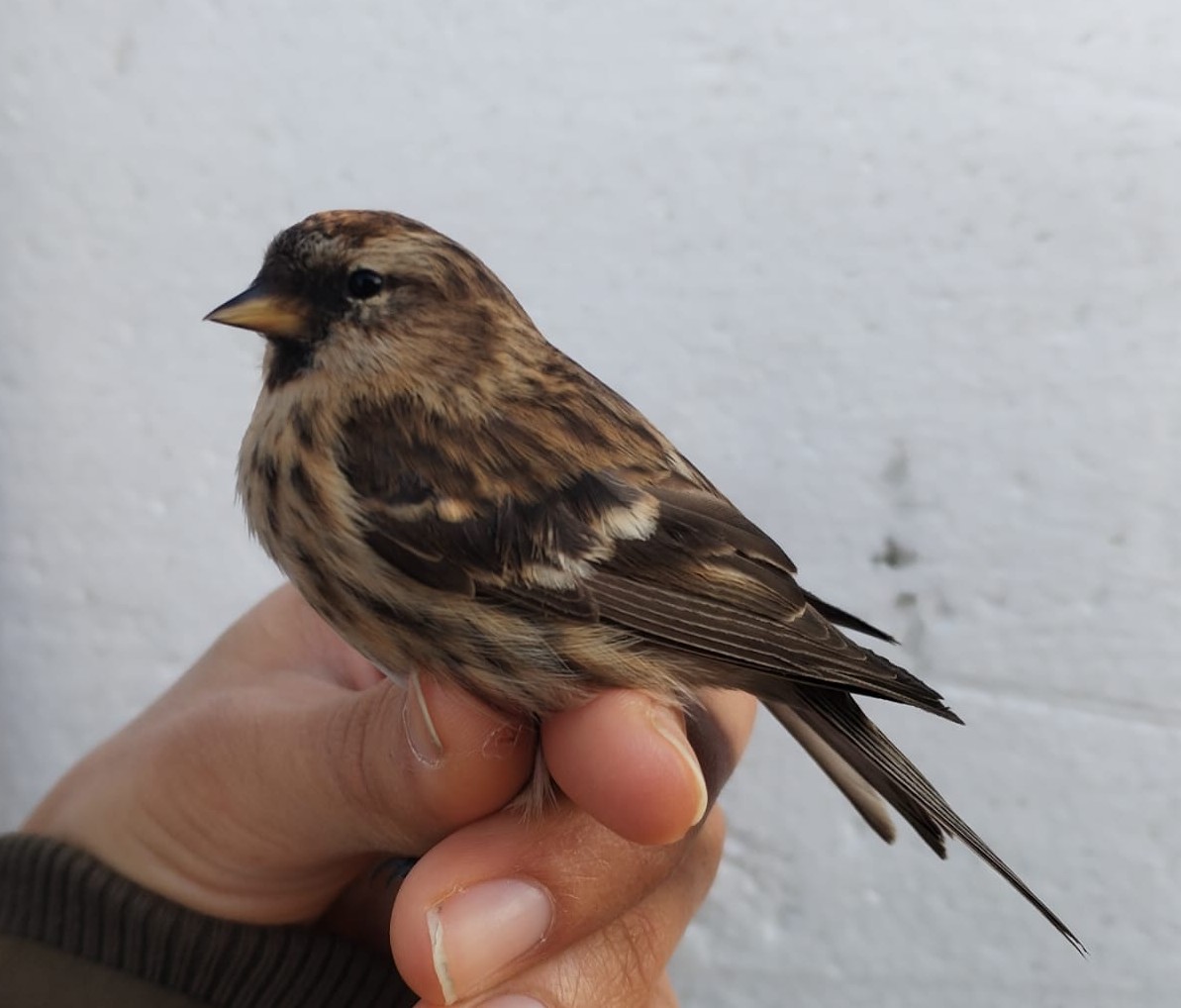
Lesser Redpoll "Lille Gråsisken"
After, there were 10 of the northern subspecies flammea in the station garden. They were mostly in the net behind the pond. In the weekend, Henrik had filled the pond with some more water and it looks like it worked and attracted the birds, they probably went down to drink and then got caught in the net. I left the nets a little longer open than standard, but there was nothing anymore. So I wanted to close at 12, but still heard one Redpoll calling. I could not resist to try with sound, as Redpolls “Gråsisken” react very well on that, so I left some nets open and had the speaker on for about two more hours, but just two more got caught.
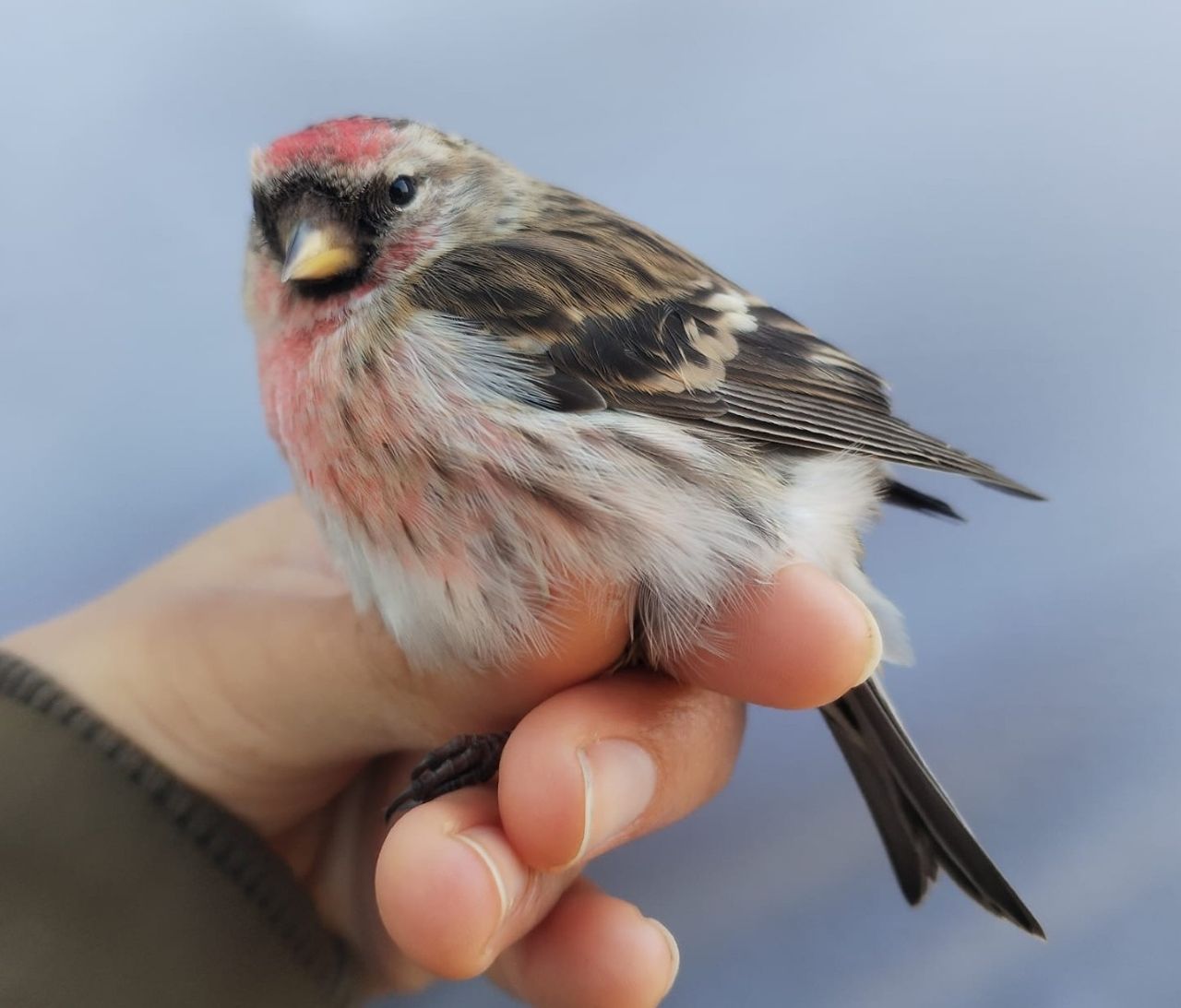
Redpoll "Nordlig Gråsisken"
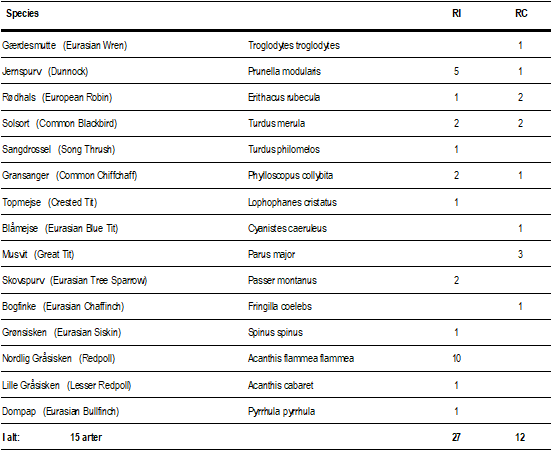
The moths:
This morning no moths but yesterday evening I had some. New were two small, but difficult ones: Agonopterix scopariella “Vitergyvelfladmøl” and one that is probably Acleris lipsiana.
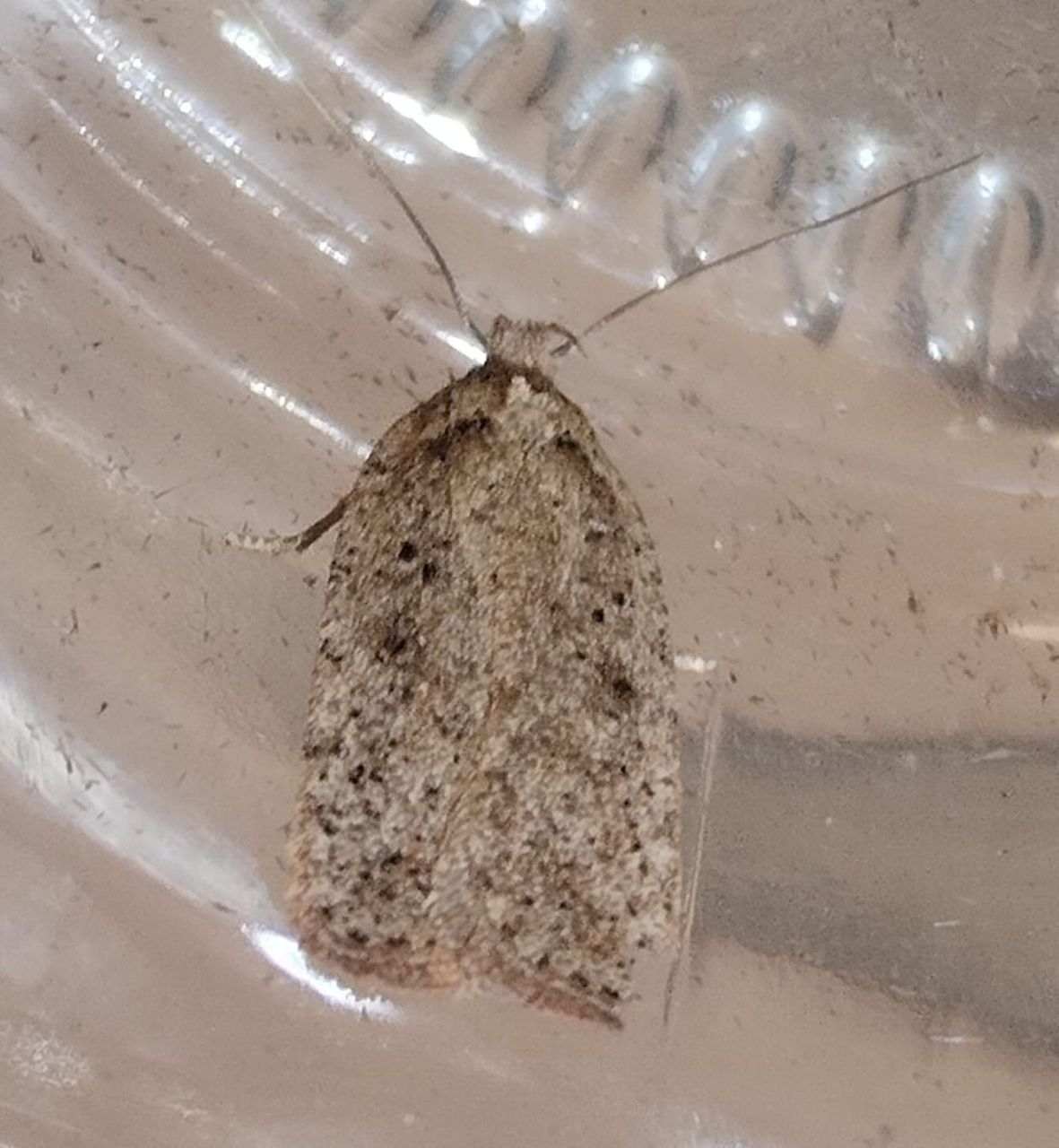
Agonopterix scopariella “Vintergyvelfladmøl”

News from the station:
In the afternoon, Ulf and Kim came to the station to meet Joseph and Frida. They went to the beach to have a look at the place, where the Little Terns “Dværgterne” will breed later the season and where they will put up a fence, so they do not get disturbed. After all four left to Fanø, where they will stay until Wednesday, to have a look on the islands, where they will put up fences to protect the birds too. Joseph will do his bachelor thesis project about Little Terns “Dværgterne”, so this is an important part of his work.
In the evening, the board of the bird observatory had a meeting at the station.
Tomorrow again low winds but not so much sun and colder, so I am hoping to again get a good number of birds.
People: Joseph Stephan, Frida, Hanelie Sidhu and Blåvandgruppen.
A good day with a Marsh Tit
The ringing:
After I had opened the nets, Henrik came to the station to bird in the area with David and another car arrived just before I went for the first round: Xenia came to the station today to join the ringing. She had chosen a good day, especially the first two rounds were good with birds. We had a lot of Dunnocks “Jernspurv” today, but later, the morning brought some surprises, that all Xenia took out of the nets. While I had a zero round in the stations garden, she took a suspicious Tit of the net. Marsh Tit “Sumpmejse” and Willow Tit “Fyrremejse” have a very similar appearance. Now in spring, the easiest to identify them in the field is listening to their songs, which are very different, but also the call is different. But there are some other characteristics that you can use for identification. The Marsh Tit “Sumpmejse” has a whitish edge on the upper mandible of the bill, while the Willow Tit “Fyrremejse” has a completely black bill. In the Marsh Tit “Sumpmejse”, the head is shiny black while it is not really shining in the Willow Tit “Fyrremejse”. Also the bib is usually quite small in the Marsh Tit “Sumpmejse” while is larger in the Willow Tit “Fyrremejse”. In hand, you can look at the tail. In the Willow Tit “Fyrremejse”, P6 is clearly shorter than P5. After some investigation, we came to the conclusion, it is a Marsh Tit ”Sumpmejse”. At the CES in my hometown we have both species, but the Willow Tit “Fyrremejse” is a bit more uncommon. Later, David told us, that at Blåvand, the Marsh Tit “Sumpmejse” is rare, so it was a good catch.

Marsh Tit/ Sumpmejse, pictures of Xenia Maria Salomonsen
A little later, Xenia also had two Goldfinches “Stillits” in the bags, also a nice species which we do not catch often here.
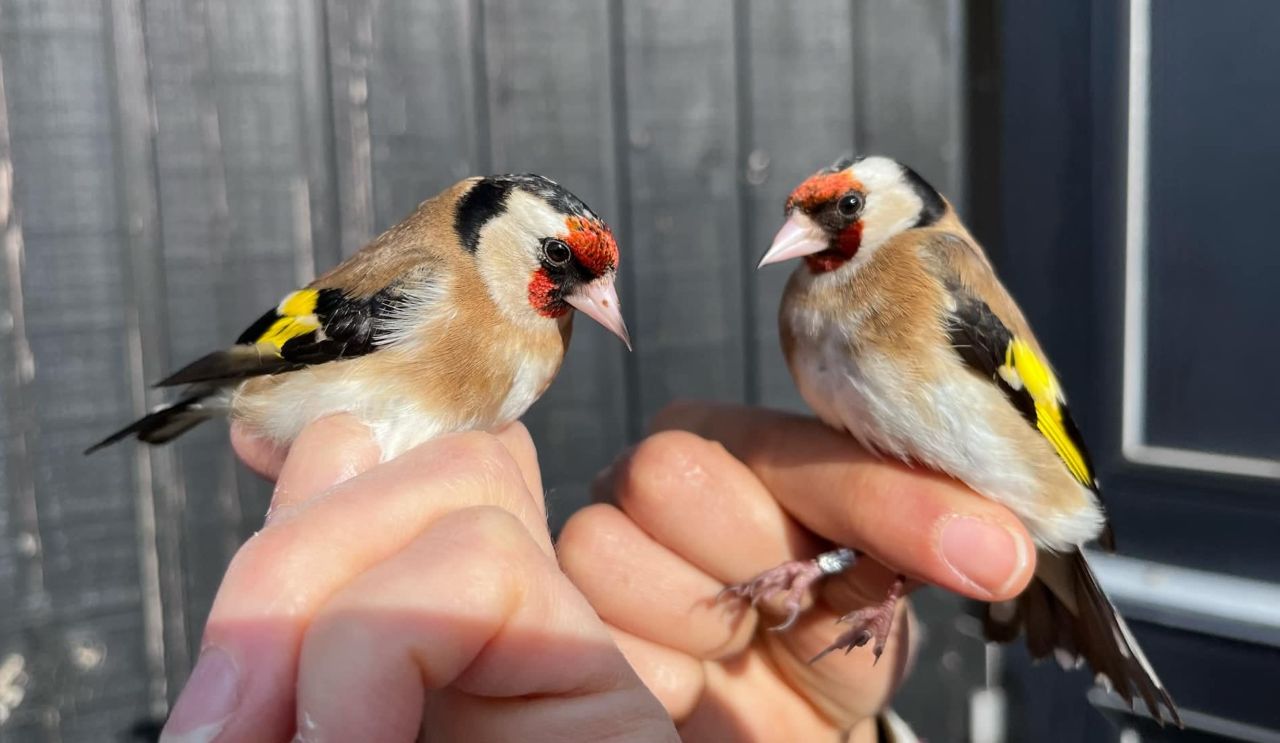
Goldfinch "Stillits", picture of Xenia Maria Salomonsen
In total, we had 25 new birds today, a good number for the first half of March.
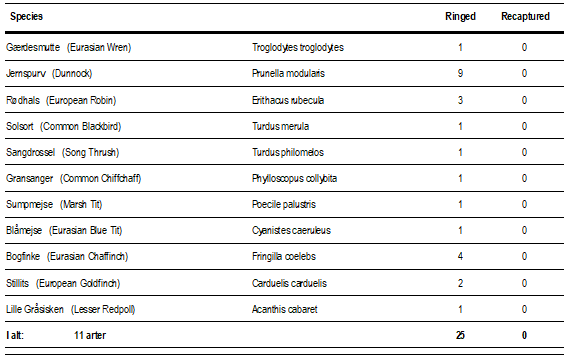
The moths:
The weather was nice the last days, the ringing good for March, but nevertheless, there was something missing to make my luck complete: The moths traps were empty.
Until yesterday evening, when I found three different species in the traps, of which two were new for me and one must remain a slash species. This morning, there was just one, but a new one for me, so it is finally worth again to make a list.
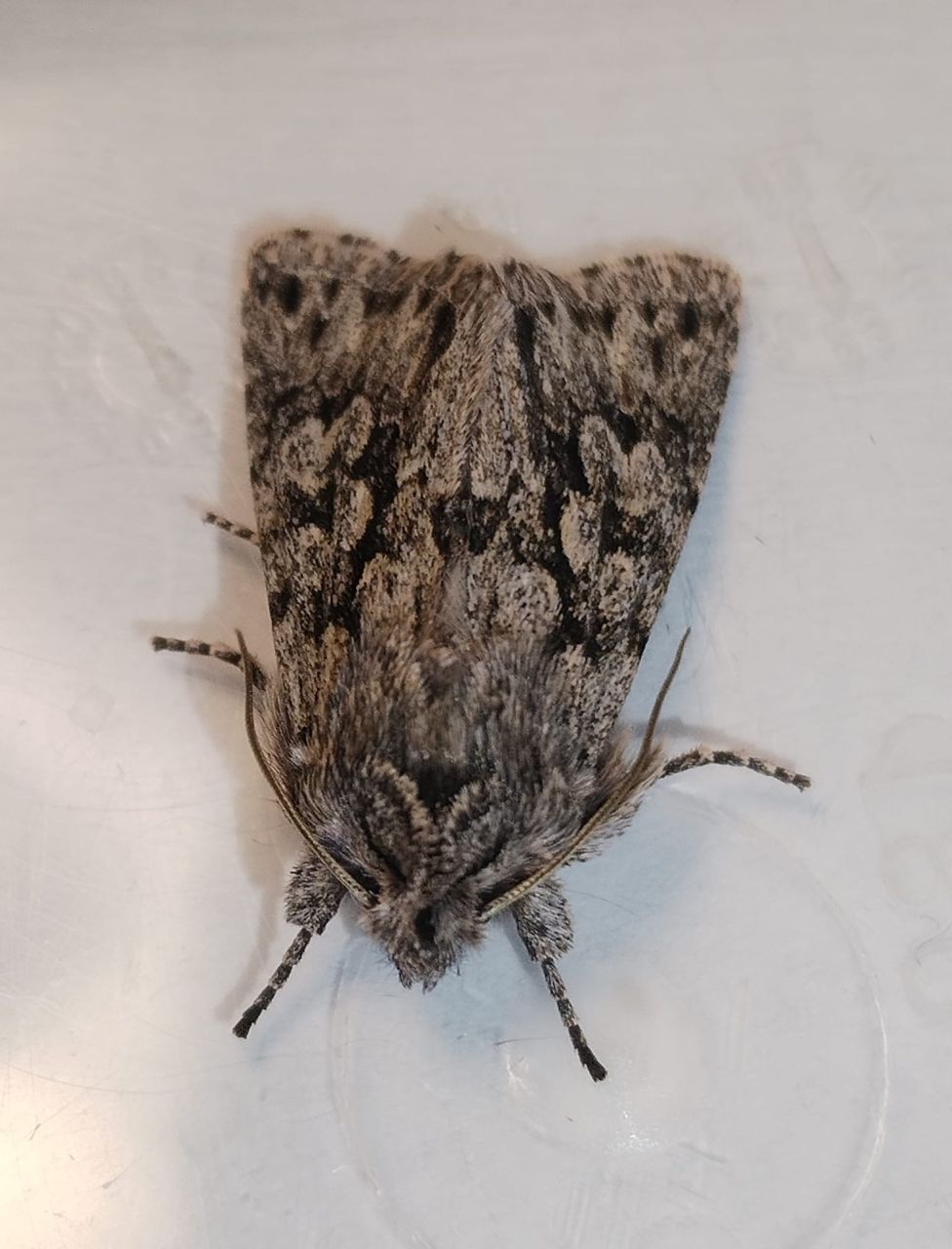
Xylocampa areola/ Gedeblad-ugle
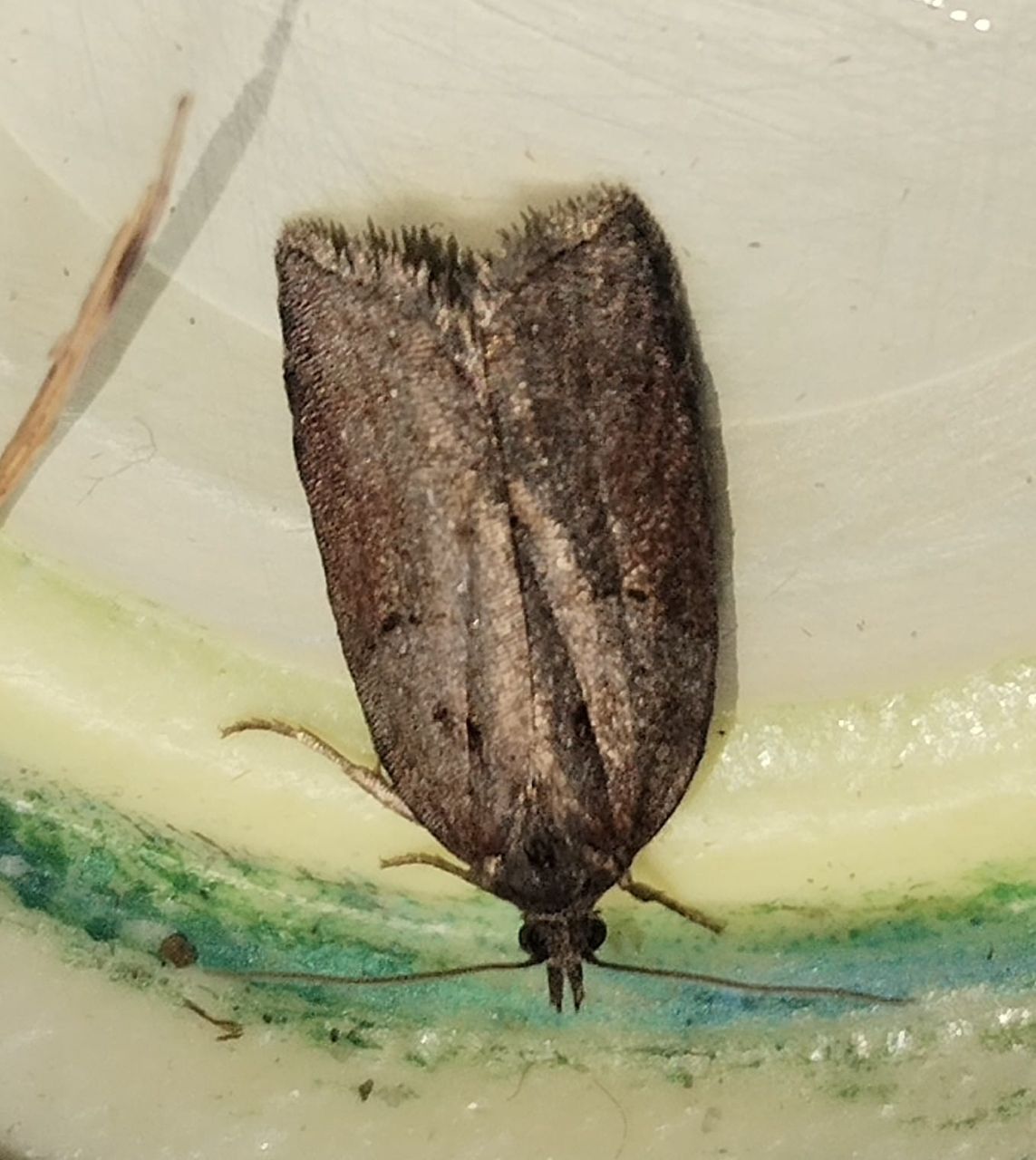
Acleris hastiana/ Foranderlig vikler

Later in the afternoon, Joseph and his girlfriend Frida, who will stay with us for one week, came back to the station.
At the station: David Manstrup, Henrik Böhmer, Xenia Maria Salomonsen, Hanelie Sidhu, Joseph Stephan and Frida
Garden work
Observations:
Jeg gik på hukket og sad der i cirka halvanden time. Der var ikke meget bevægelse over havet, men man skal nyde de små ting her i begyndelsen af sæsonen. Der var intet usædvanligt hverken på arter eller tal.
Det bedste var nok 4 Kaspiske Måger på stranden ud af de omkring 300 Sølvmåger som rastede. Heriblandt en rigtig flot 2K Kaspisk Måge, som jeg kunne nyde igennem hele morgenen. Det varmede også en smule da 2 flotte voksne suler kom trækkende syd, men jo ikke noget der ellers tager kegler i birder danmark.
The ringing:
Not so many birds were singing early in the morning, so I was not totally sure if it would be such a good day for ringing. There was again very little wind and soon it became sunny.
The first round brought just one bird but later it turned out to be the best day for this season, with 14 new birds and four recaptures.
The species, that I caught the most today was the Dunnock “Jernspurv”. Three of the Dunnocks had a lot of feather lies. For some reason, Dunnocks often have these, more than other species. Later in the morning, I met Svend Aage, who came for the garden work today and I talked with him about it. He asked if also other often ground flying birds would have these lies, as the Røbin “Rødhals” or the Wren “Gærdesmutte”. But in my experience, it is really mostly Dunnocks “Jernspurv”, I don´t remember seeing it on Wrens “Gærdesmutte”, but think I had some Robins “Rødhals” with feather lies, but mainly really Dunnocks “Jernspurv”. On the following rounds, I kept wondering a bit, why Dunnocks are particularly vulnerable for feather lies, I did not find a solution. But evenings are still quite long, I might search if there are any articles about that and will update you, if I find something on that.
Another Chiffchaff “Gransanger” was in the net today. Other highlights were a Greenfinch “Grønirisk” and a Redwing “Vindrossel”. When I went out to take a picture of it, Steffi from the lighthouse and some visitors saw me and I could show them the bird with the beautiful rusty red under the wing.
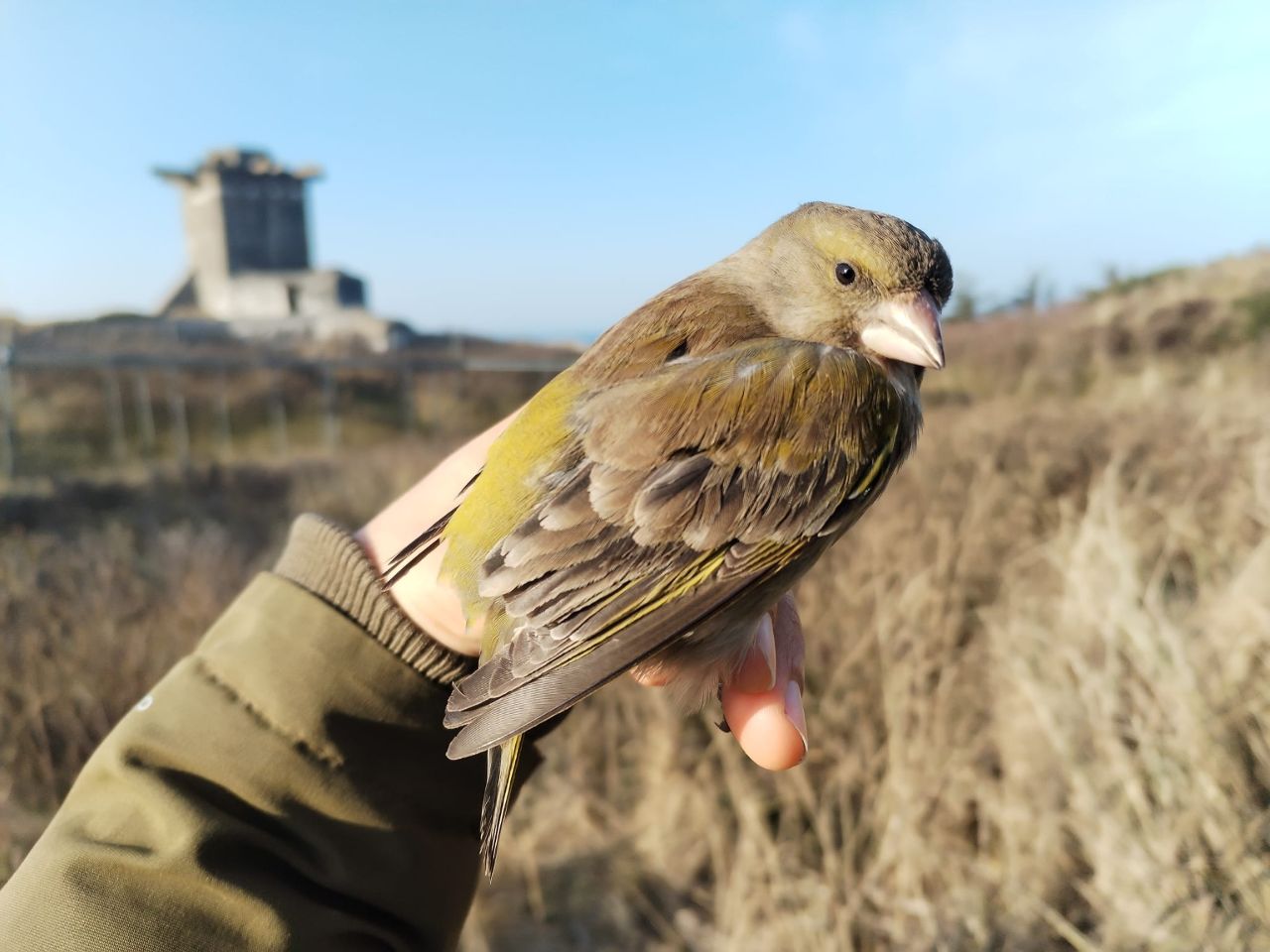
Greenfinch "Grønirisk".
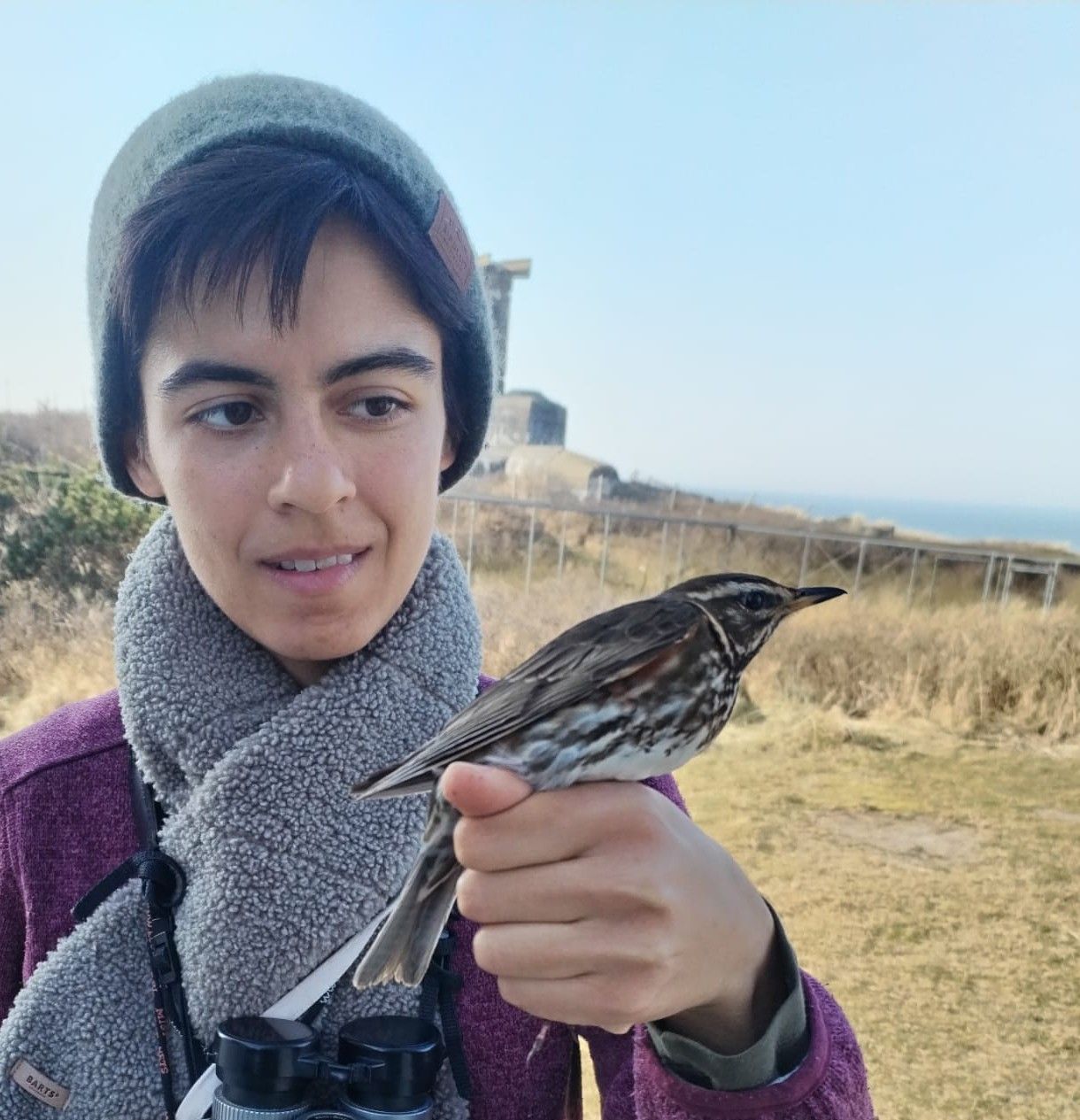
The visitors took the picture for me. Now I am also on it.
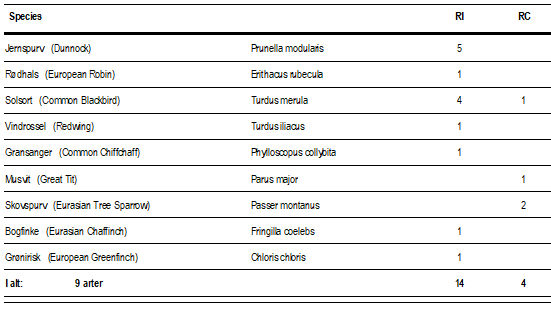
News of the station:
Many people were at the station today, as some of the trees in the station garden were cut today, so they are lower and on the hight of the nets, so the birds do not just fly over. First Hans Bjerre with his car full of equipment arrived together with Svend Aage, then also Henrik Callesen, Bent and Henrik Böhmer arrived. David did a few hours of migration count but was also soon in the garden to help. As there were so many people, there was also cake, which was nice.
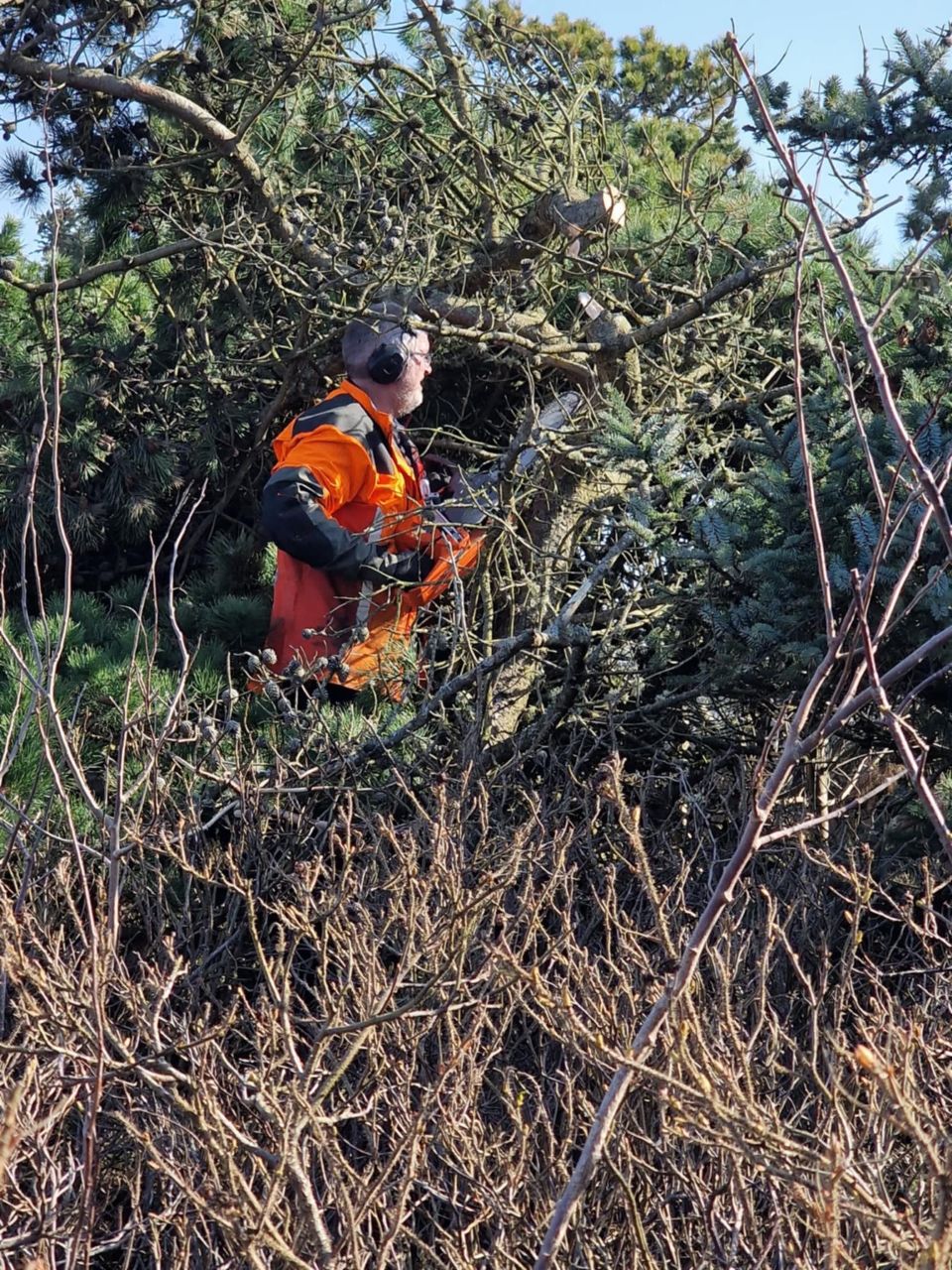
Hans at work.
People: Svend Aage Clausen, Bent Jakobsen, Hans Bjerre, Henrik Callesen, Henrik Böhmer, David Manstrup, Hanelie Sidhu
New arrivals in the nets
This morning, there were even more Songthrushes “Sangdrossel” singing. I heard at least two both around the station and lighthouse garden. And first round, I found one in a net in the lighthouse garden. Another short-distance migrant arrived in the net, a Chiffchaff “Gransanger”. There are also a few that stay over winter but most still migrate to warmer parts of Europe, so I see it as another sign that migration starts.
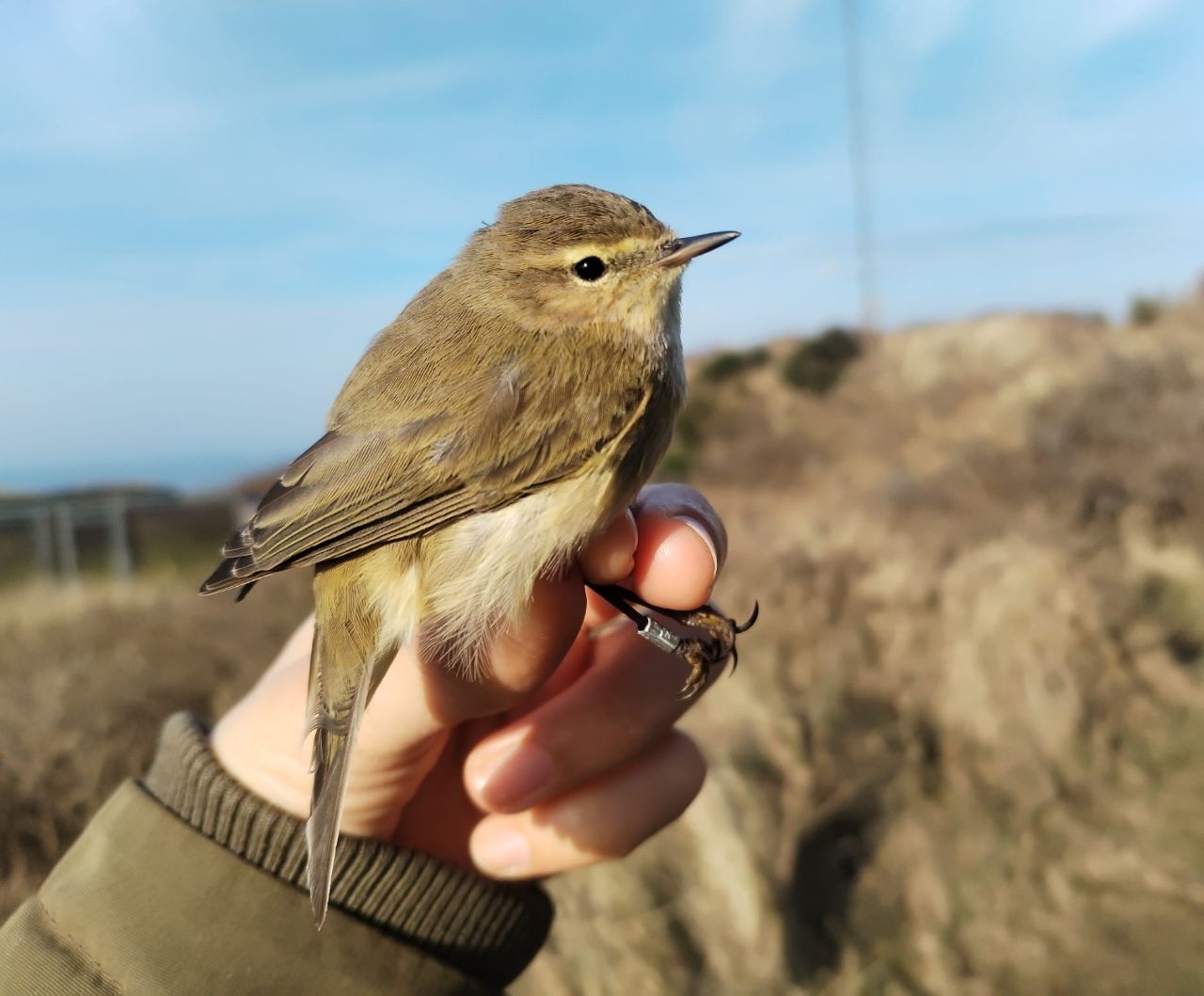
Chiffchaff "Gransanger"
And some other nice species were in the nets today: The first Robin “Rødhals” of the season, a common but always nice bird as well as a Crested Tit “Topmejse”. First, it was just calling in the lighthouse garden, next round it was in one of the nets at Krattet.
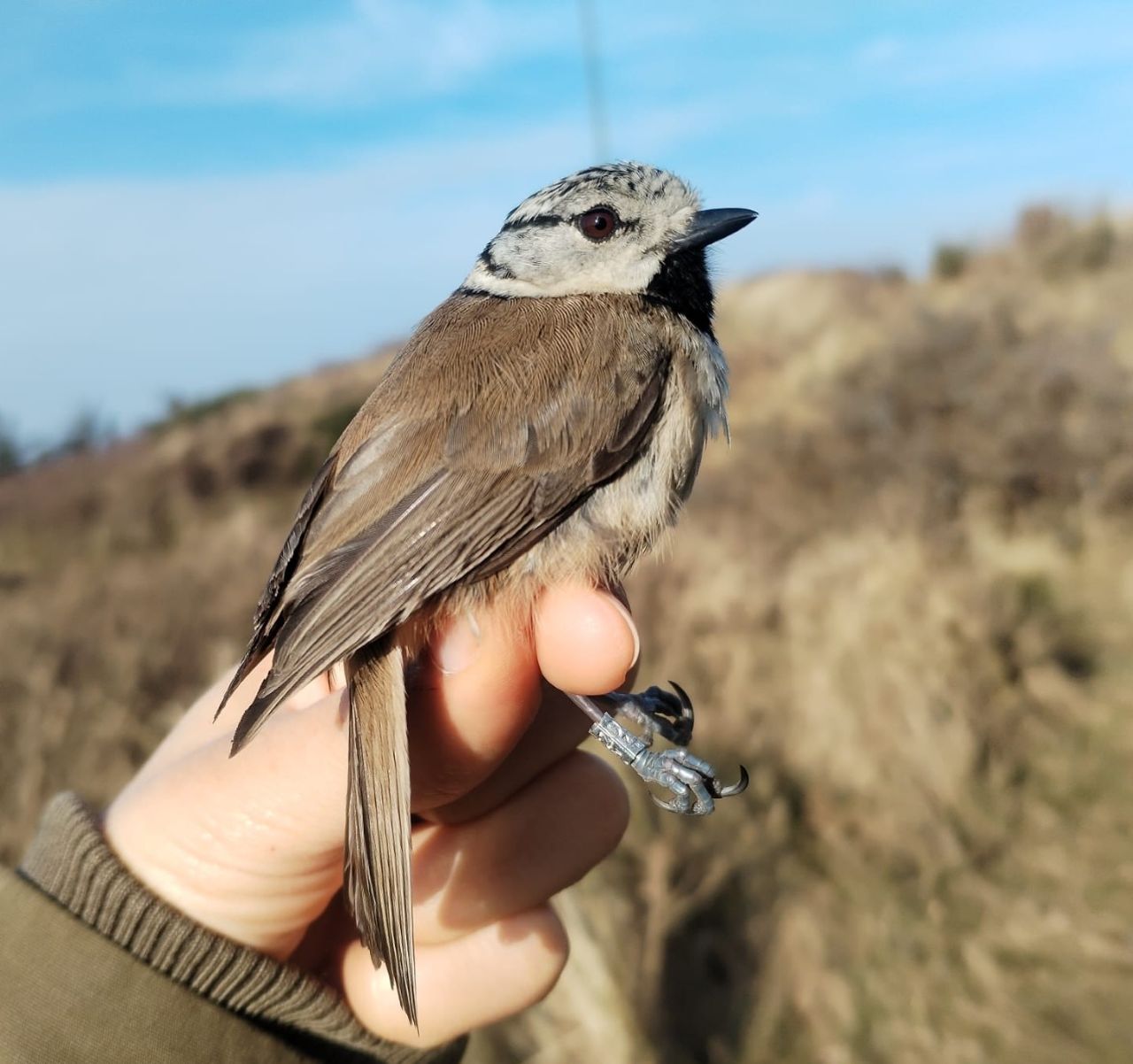
The Crested Tit "Topmejse" refused to show its pretty crest on the picture.
The wind was very low today, but after nine o´clock, it slowed down a lot with passerine activity. The sun came out and it was a beautiful morning, but at 9.30 the last bird was in the net.
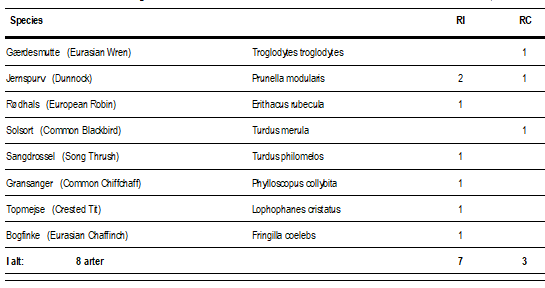
When I closed the nets, two of the pegs in the ground, to which the net poles are attached with rope and which make them stand, went out of the ground. So I was still a bit busy with hammering them in and making the nets stand again. But now, it is all ready to be up tomorrow morning again!
At the station: David Manstrup, Hanelie Sidhu
Morning greetings from a Songthrush
The morning started again with opening the nets, Joseph and I did one garden each. When I came down from the lighthouse garden, a Song Thrush “Sangdrossel” was singing near the stations garden. I stood still for a while and listened. Another sign, that spring is really starting! When I went for the first round, it had stopped and I hoped to find it in the net, but not yet. It turned out to be a really beautiful, sunny and bright day, I had the biggest number of birds so far that season, 12 new and 5 recaps. Most birds were caught in the stations garden. The only bird in the lighthouse garden was a Treecreeper, but this time a Eurasian “Træløber”. Note the short bill in comparison to the Short-toed Treecreeper “Korttået Træløber” the long hind claw and the supercilium which reaches both the forehead and the nape. It was nice to have both Treecreeper species in such a short interval, to compare, as I still had the Short-toed well in mind.
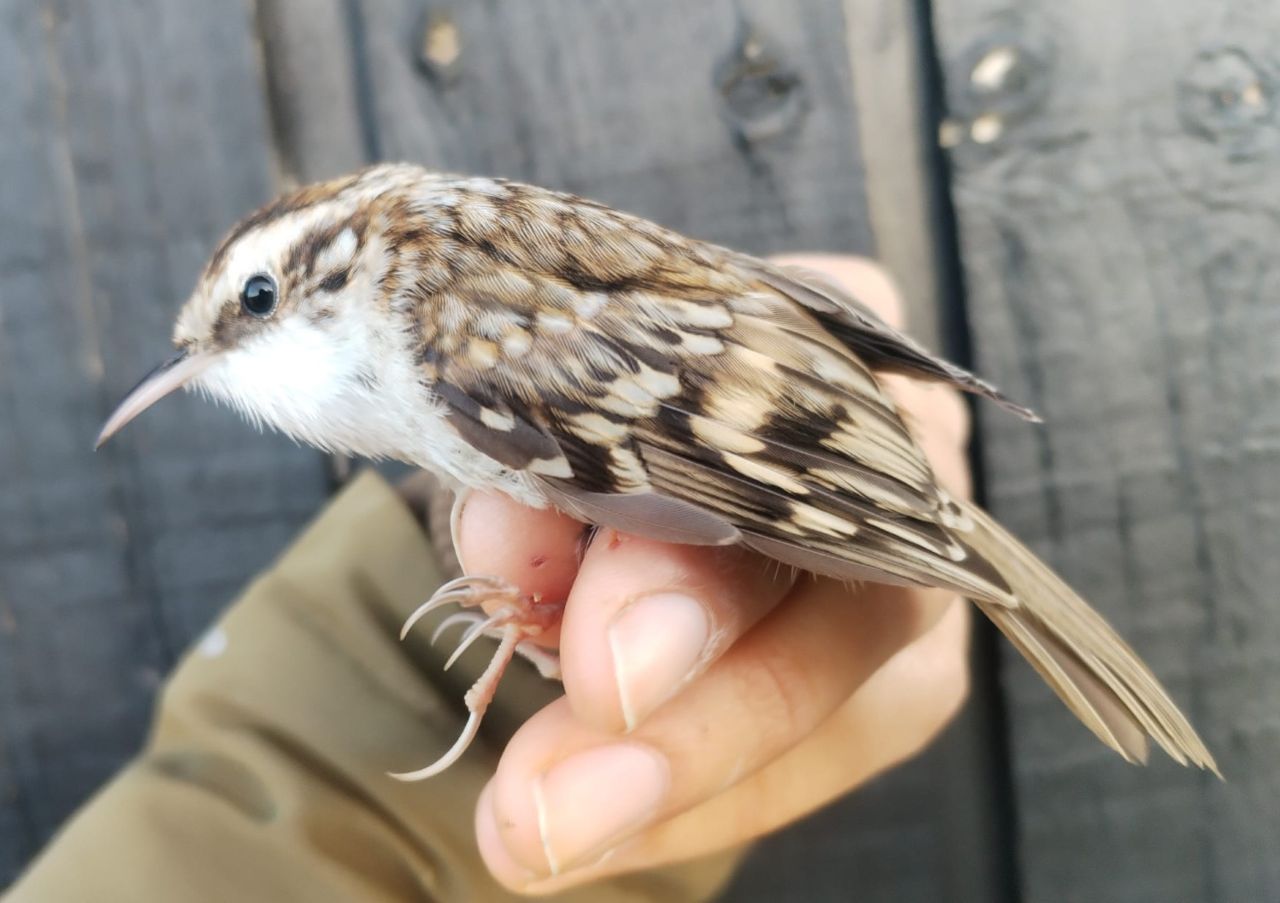
Eurasian Treecreeper "Træløber"
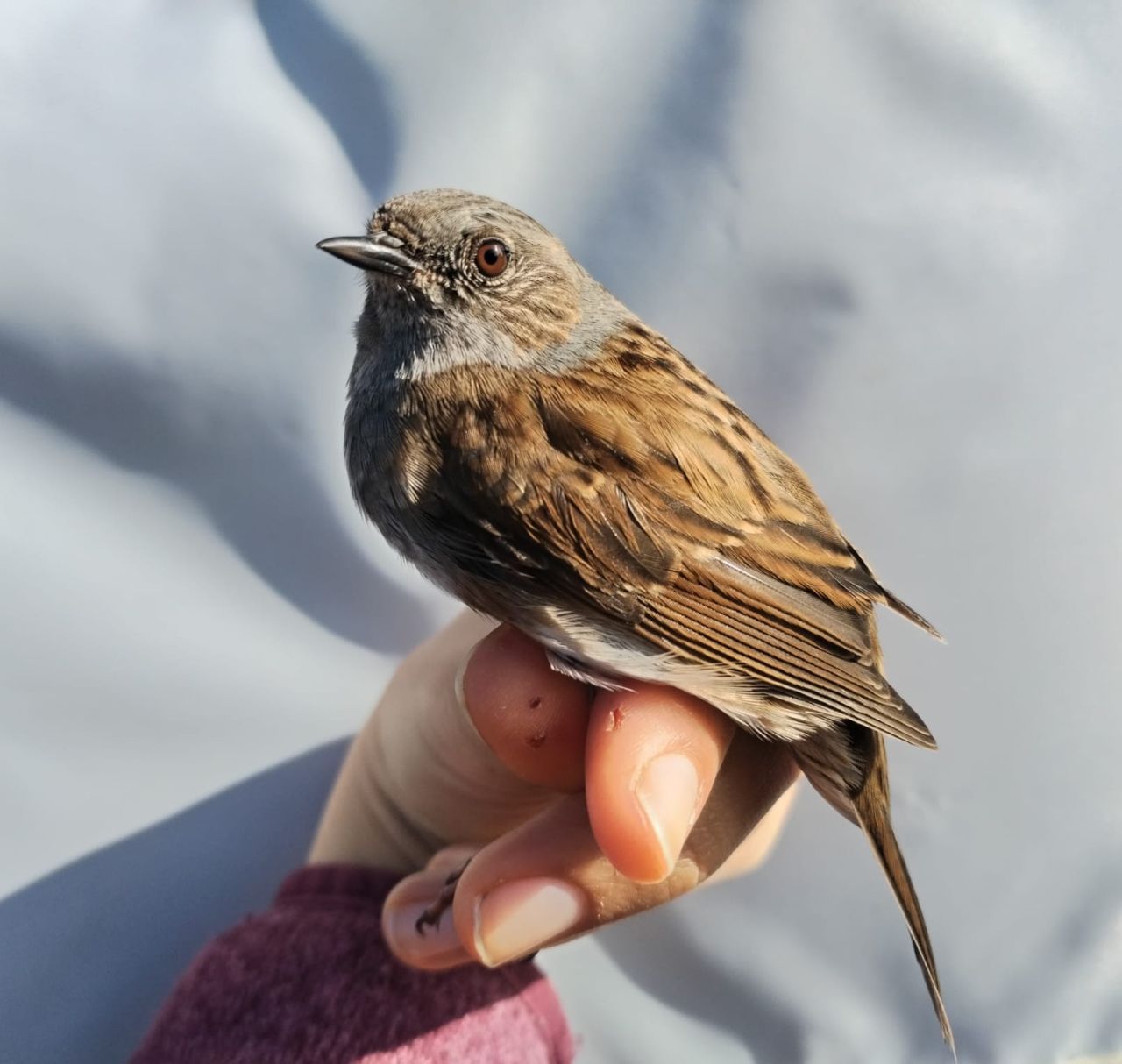
Tree Dunnocks "Jernspurv" in the nets today.
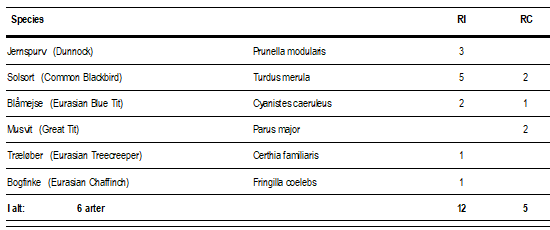
During the morning, Joseph left to Copenhagen for a long weekend. He will be back on Sunday.
Also this morning, a professional cleaning team came to the station and cleaned the floors on the ground floor and the bathrooms.
It was a really nice spring day and many Ostercatchers “Strandskade”, Sanderlings “Sandløber” Turnstones “Stenvender” and Purple Sandpipers “Sortgrå Ryle” were gartering on the sand bank at the beach.
The weather looks promising for the next days, I am looking forward to some nice mornings with ringing and also hope to finally have something in the moths traps again.
At the station: Joseph Stephan, Hanelie Sidhu
A windy day at Blåvandshuk
The wind strength for today did not look very promising for today when we checked DMI yesterday evening. I woke up nevertheless to check if it had changed. But no. We could enjoy sleeping a bit longer. After breakfast the bright sun lured me out.
The military area was open, so I decided to cycle through Kallesmærkhede to Strib Sø. Strib Sø was not as interesting as expected, I didn´t see more on the lake than Greylegs “Grågas” and Mallards “Gråand”. But I was delighted by four Mistle Thrushes “Misteldrossel”, a singing Crested Tit “Topmejse”, some Stonechats “Sortstrubet Bynkefugl”, Meadow Pipits “Engpiber” and Skylarks “Sanglærke”.
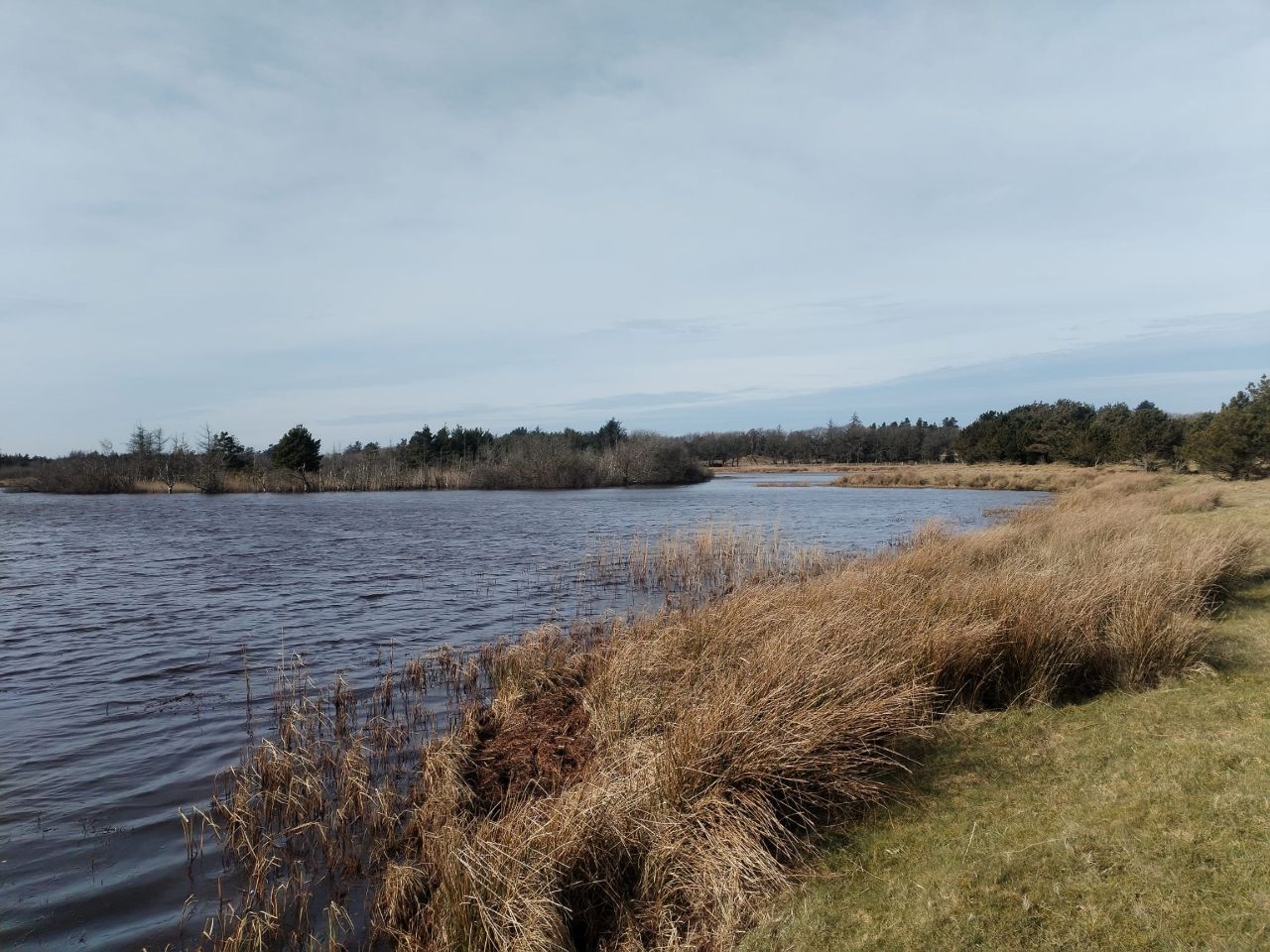
Strib Sø
While the way to the lake was nice and easy as I had the wind in my back, I really had to fight against the wind on the way back. It was now afternoon, and I saw three Buzzards “Musvage”, a Kestrel “Tårnfalk” and a Hen Harrier “Blå Kærhøg”. Maybe it was the same one that Joseph saw on his walk. He went along the dunes to Sabinebunker and was a smarter than me cycling against the wind, by laying sheltered from the wind in the dunes, the Skylarks “Sanglærke” singing above him.
Another day passed at Blåvand, DMI is promising less wind for the next days, so the nets will be opened again tomorrow.
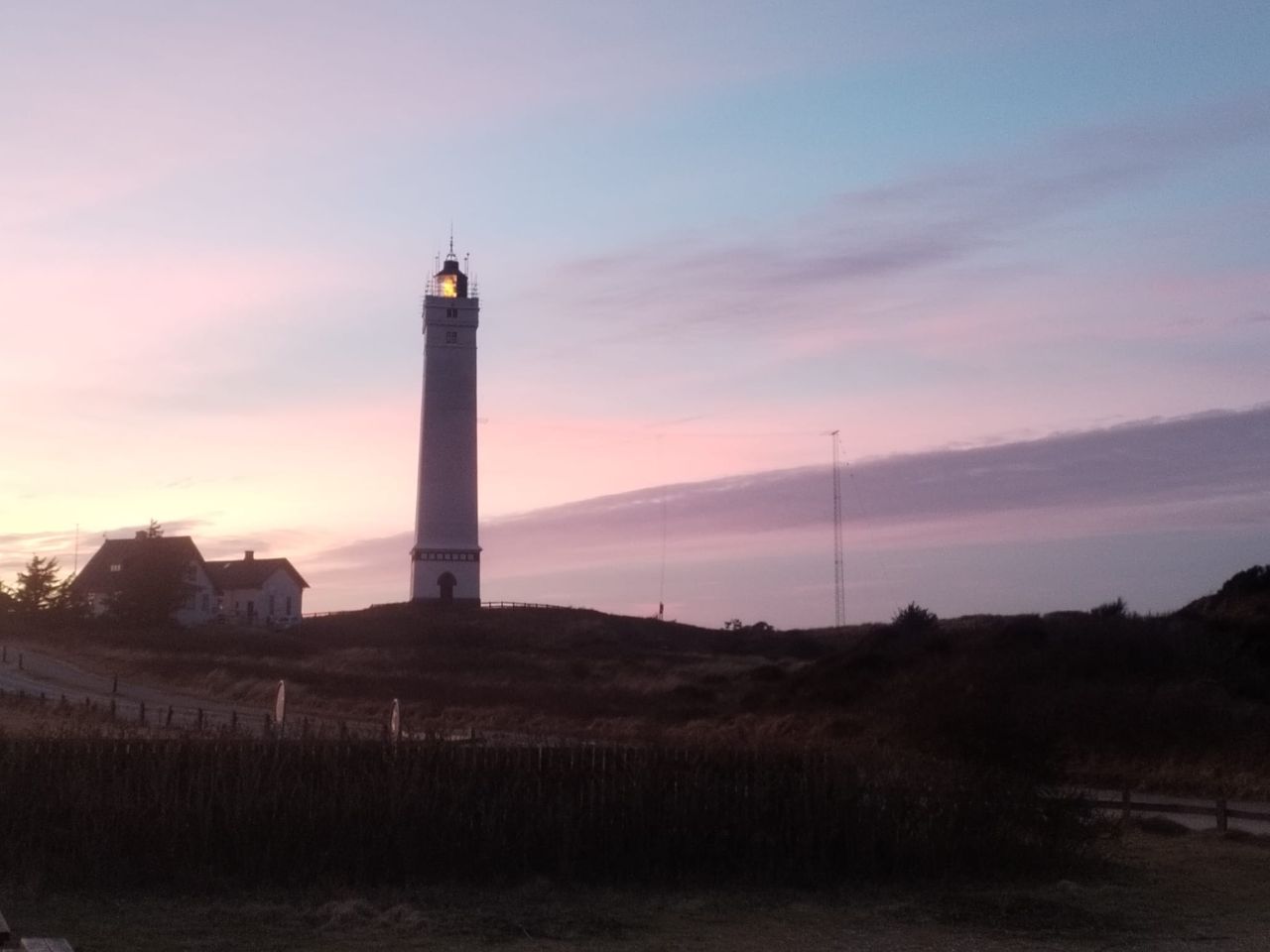
Sunset behind the lighthouse.
At the station: Joseph Stephan, Hanelie Sidhu
An Eventful Day
Today started with Hanelie and me opening the mist nets while the wind blew at 8 m/s from the west. It was quite chilly, just 5 degrees, under a cloudy sky. After a cozy breakfast, the sun began to break through the clouds, and a Great Spotted Woodpecker landed in the net - always a pleasure to see this species up close!
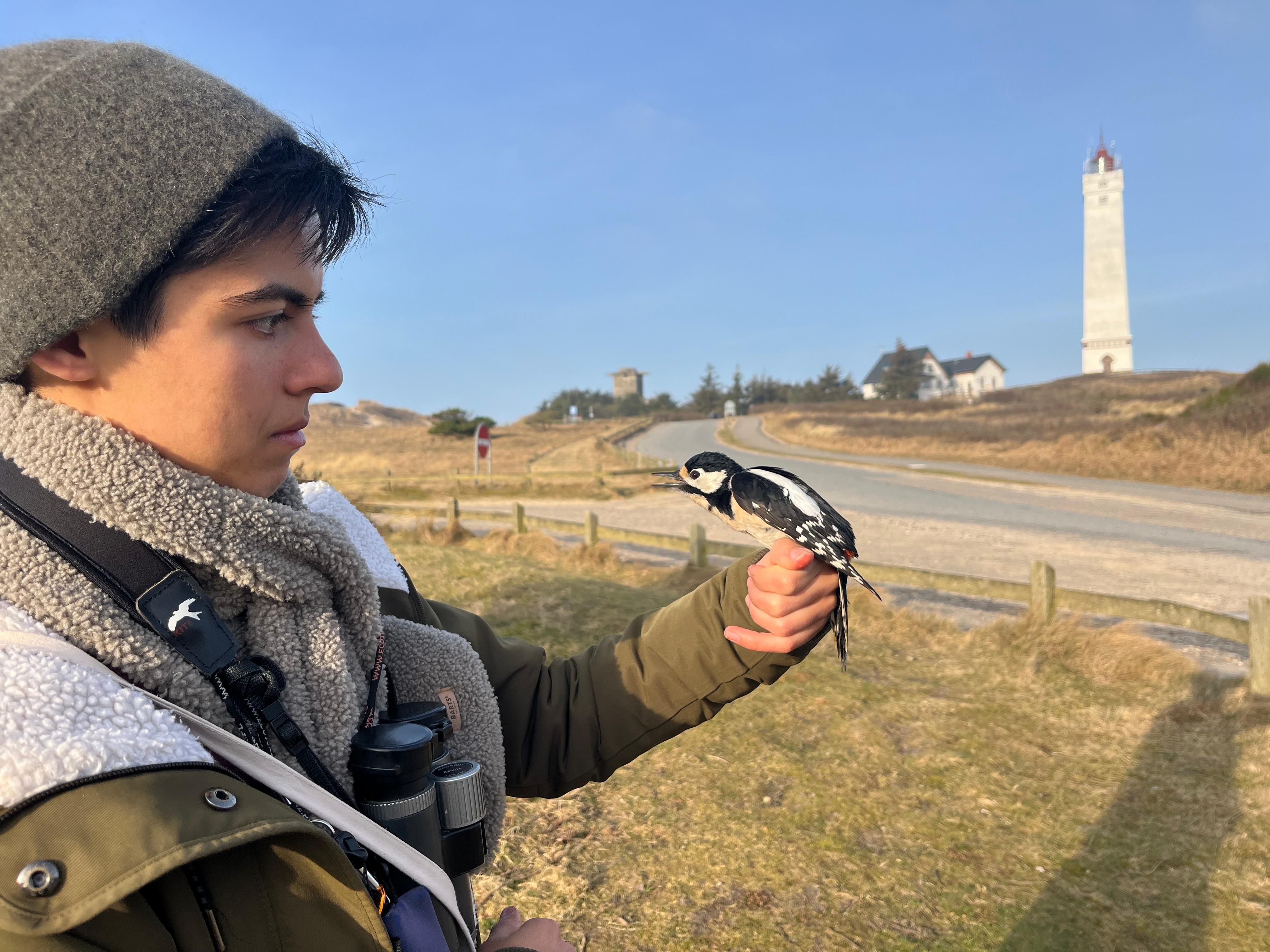
After releasing the Woodpecker, I headed to the dunes to observe the migration. Since there were hardly any migrating birds, I decided to move closer to the water and enjoy watching the many Purple Sandpipers (35) and Turnstones (20) foraging among the Sanderlings (250). I also spotted a single Ringed Plover on the beach.
Later, Hanelie and I were surprised by a short visit from Bent - and by a viper - during our closing run. It was incredible to see both in their natural habitat! ;)
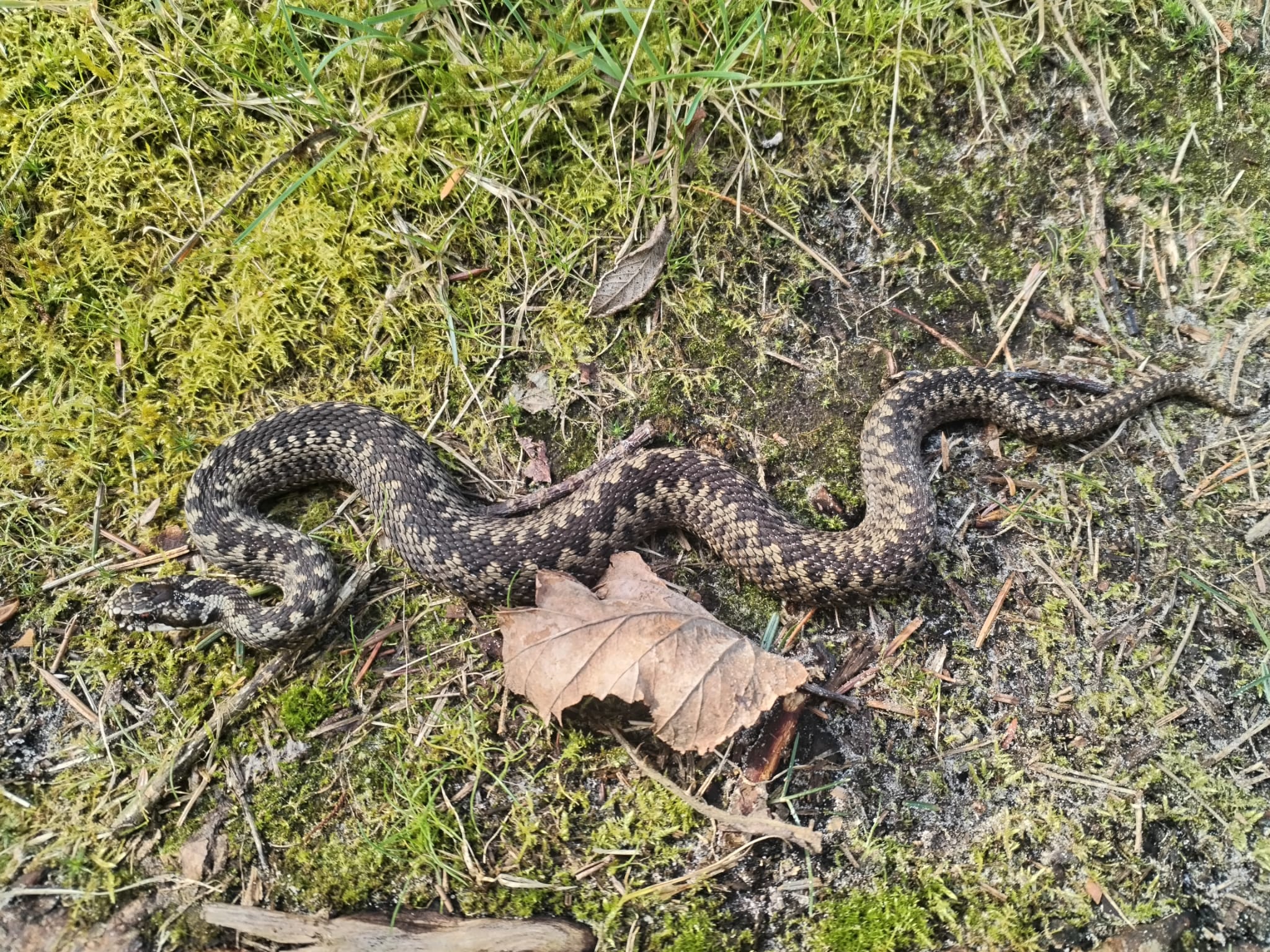
Ringing results:

In the afternoon, we replaced a broken net in the lighthouse garden.
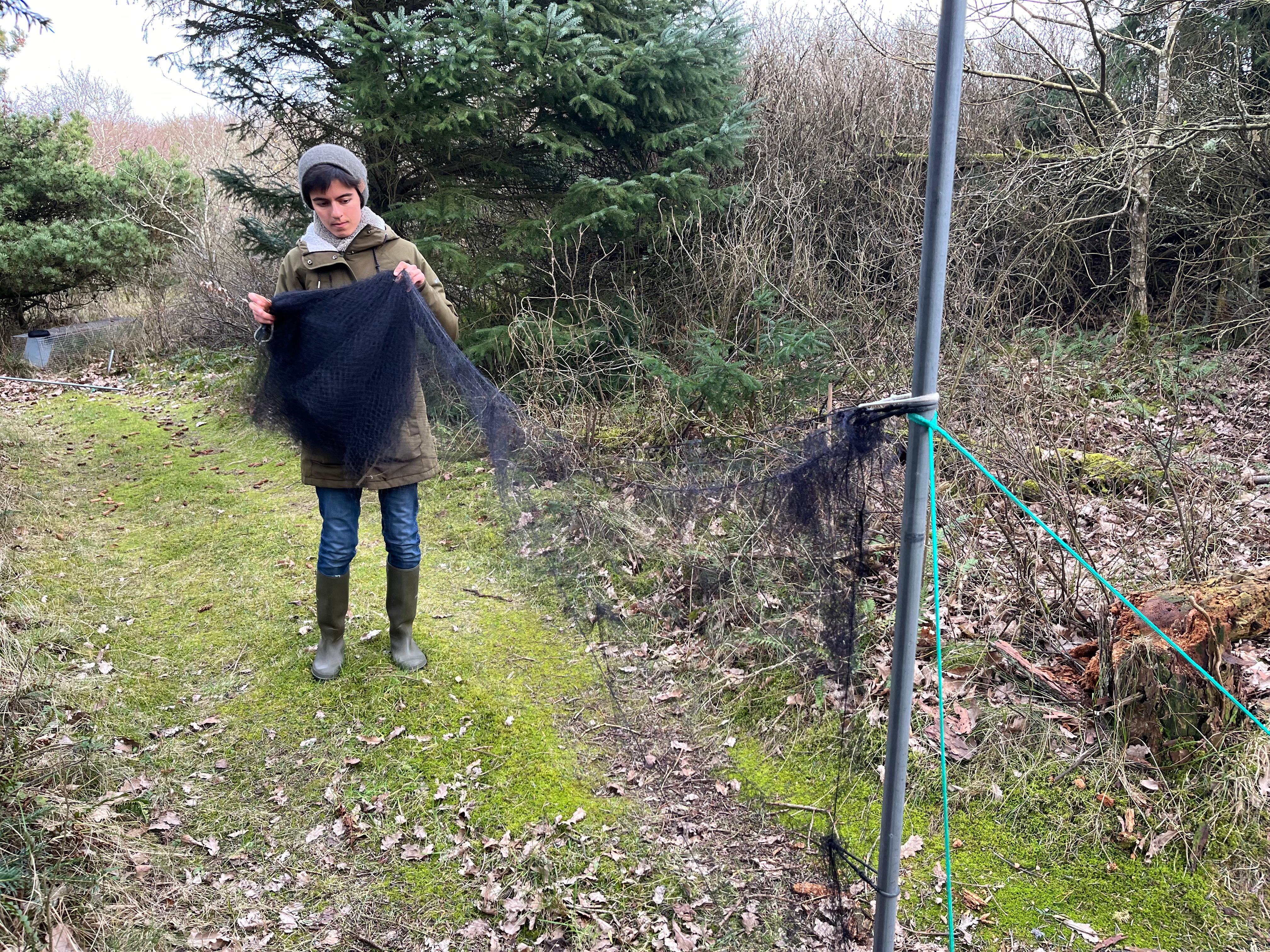
To end this wonderful day, I made some vegetarian burritos for dinner, which carried us off to our well-deserved rest.
People at the Station: Joseph Stephan, Hanelie Sidhu
Wind from Southwest
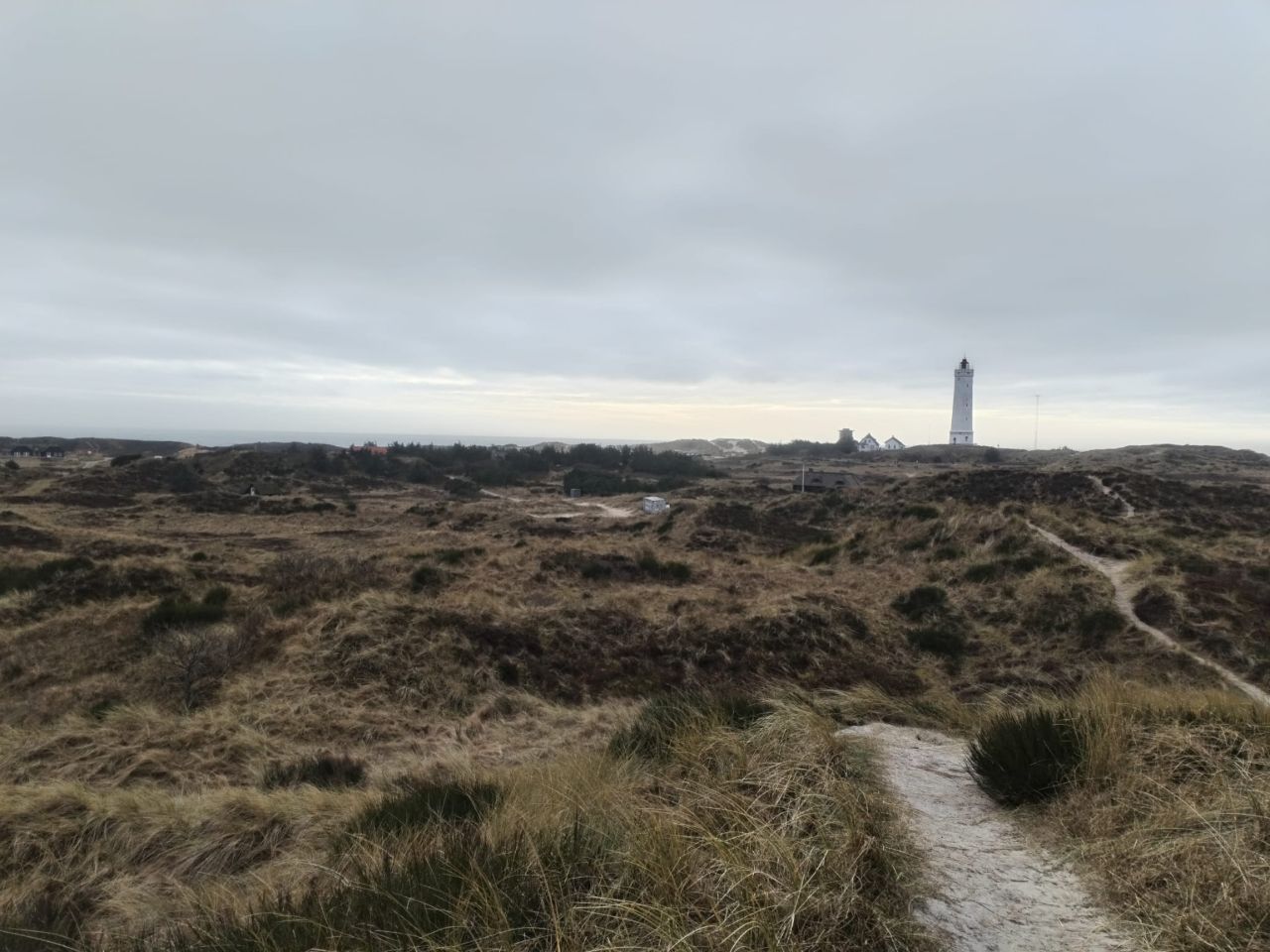
Grey sky over Blåvand
This morning unfortunately, the weather was not better than expected. It was blowing too much to do standardized ringing in the morning. Some nets were open for short, and one Blackbird “Solsort” was caught.
Ringing totals:
Solsort: 1/0
A rather cold and quiet day today, we are hoping for better weather to come during the week.
People: Joseph Stephan, Hanelie Sidhu
Good start with Short-toed Treecreeper and Glaucous Gull
The ringing:
Today was already a big improvement to yesterday. When I checked DMI in the morning, I saw, that we would have fog again in Blåvand from opening time the whole morning. When I looked out of the window, there was no fog at all. But I was prepared for it, it can get foggy very fast close to the sea. So it just improved my mood a lot, when the fog did not turn up, instead, a bright sun came up at sunrise. First round already brought more new birds than the whole day before, so I was happy. But the best of the morning was still about to come: It appeared in form of a Short-toed Treecreeper “Korttået Træløber”. If there is a Treecreeper with a kind of long Curlew bill in the net, you must be suspicious. Also the step in the wing bar was missing and the tips of the primaries where bright white while they are a little more off-white in the Eurasian Treecreeper. This is a nice species in hand, sometimes, they can soon get a bit tired but this one was very lively.
 Some pictures of the Short-toed Treecreeper “Korttået Træløber”
Some pictures of the Short-toed Treecreeper “Korttået Træløber”
Eight new birds in total and one recap, a nice Yellowhammer “Gulspurv,” were a big improvement to yesterday. Else, it was mainly adult male Blackbirds “Solsort” in the nets.

A bit later in the morning David and Jimmy went to the beach and spotted a Glaucous Gull “Gråmage”!
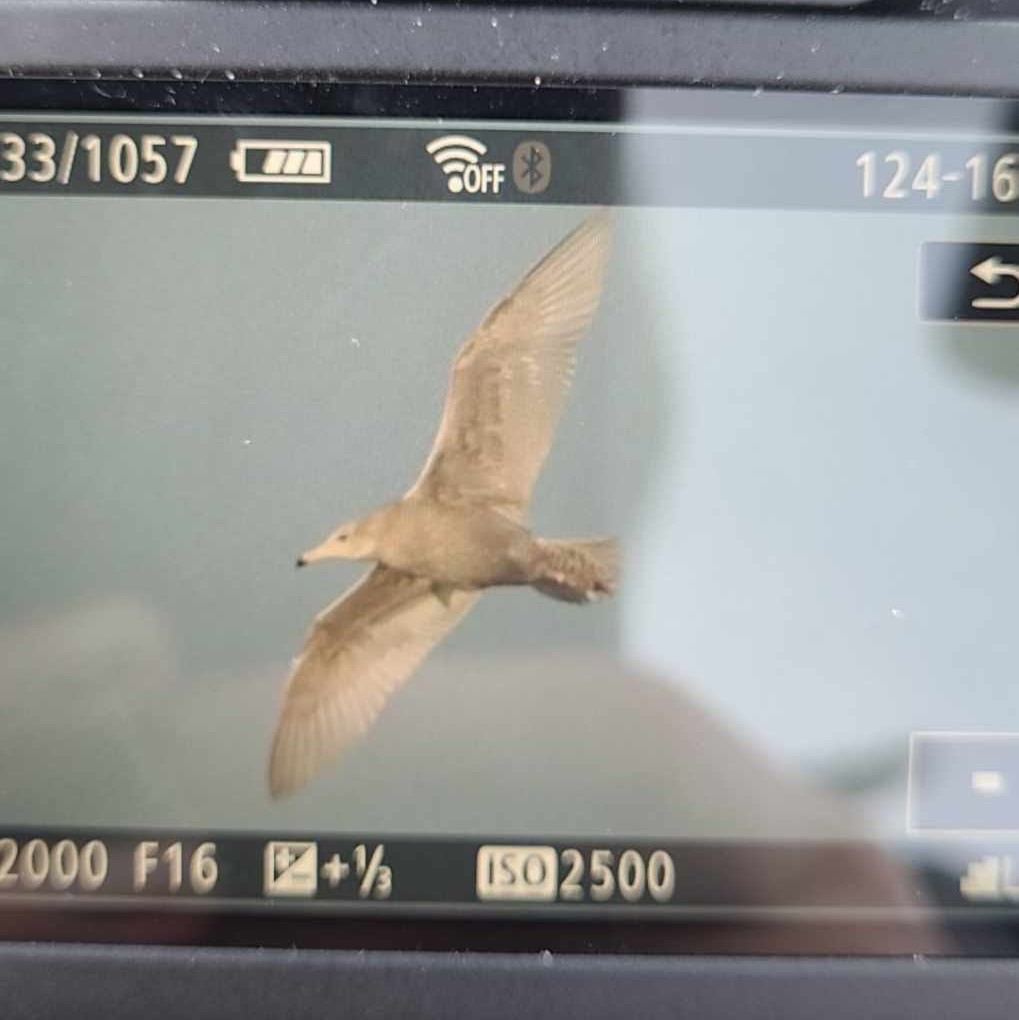
Glaucous Gull “Gråmage” by David Manstrup
Yesterday evening we had a new arrival at the station: We welcomed back Joseph for the whole spring season and summer, who had already been at the station in autumn 2023.
In the afternoon, Jimmy took Joseph and me to Grønningen. It was a really nice trip and a good variety of species for the time of the year. Great observations were a Hen Harrier “Blå Kærhøg” and lot of Pintails “Spidsand”, a very beautiful duck, I think. Tak for turen Jimmy!
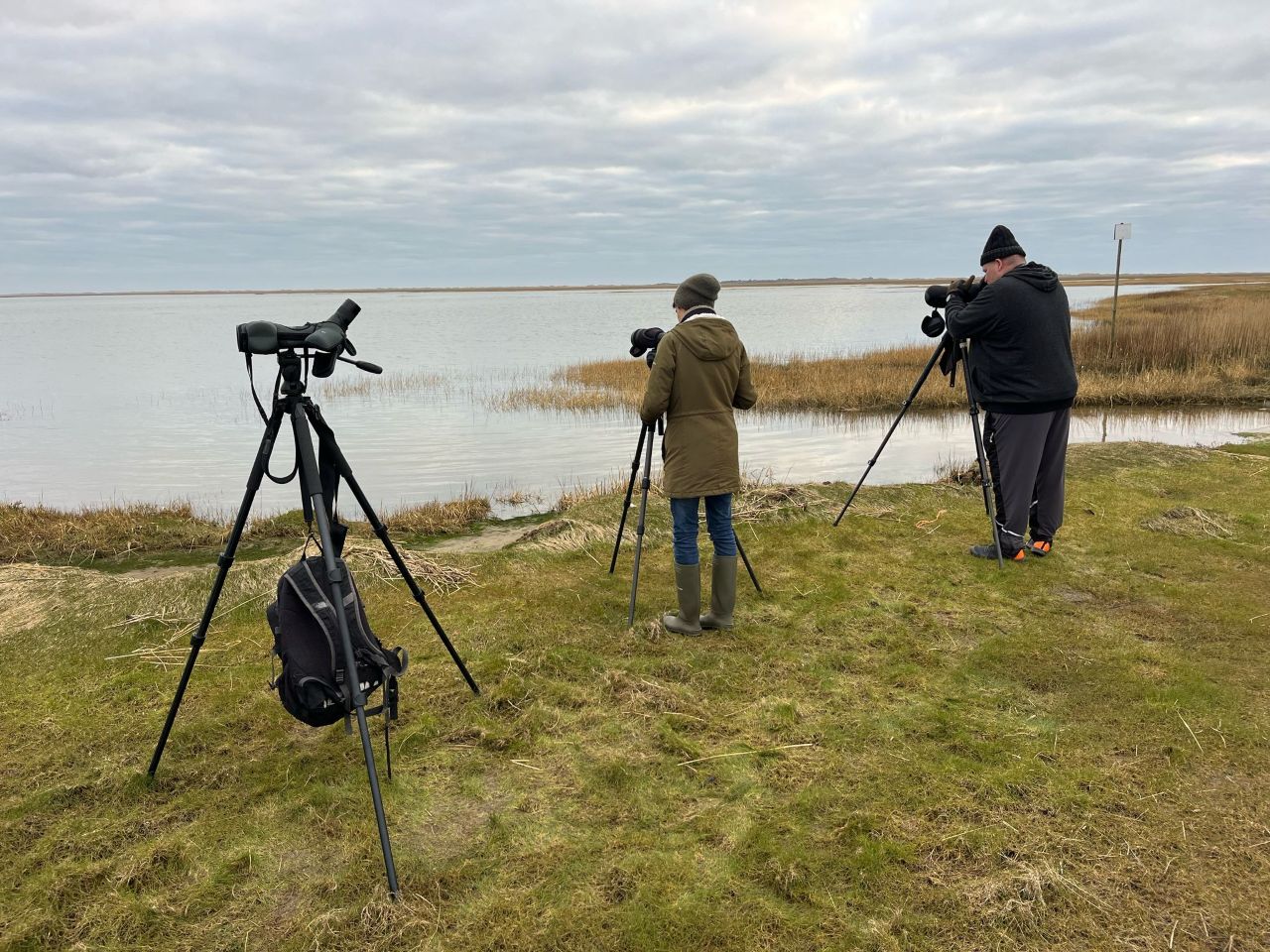
Birdwatching at Grønningen.
People: Joseph, David, Jimmy og Hanelie
